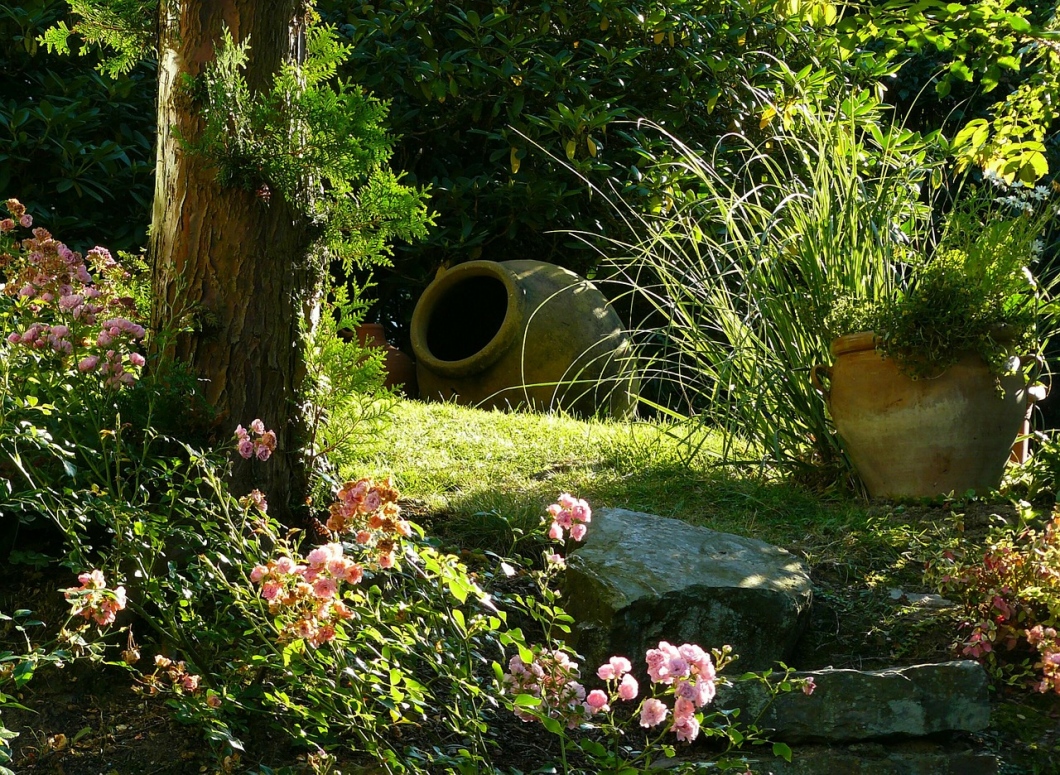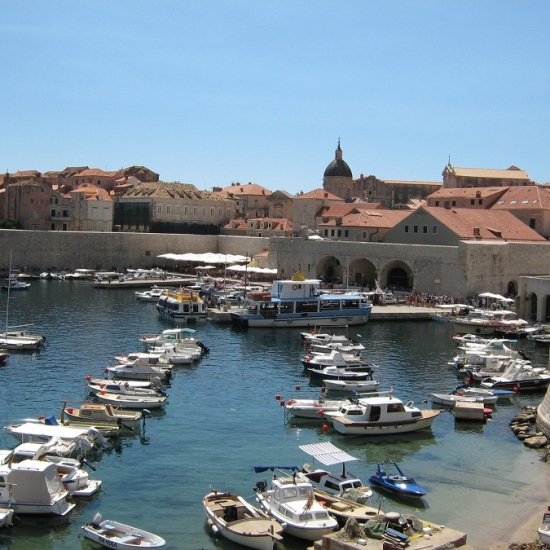Mediterranean gardens are a heavenly blend of vibrant colors, aesthetic structure and pleasing smells that makes them famous across Europe’s countryside. If you aim to replicate your very own share of Mediterranean delight, then these nine pointers are sure to get you as close to the Med garden theme as possible.
1) Shaded seating areas

Pergolas exquisitely create shaded seating areas and these structures also provide a nice canvas for expressive climbing plants to showcase their visual and sensual appeal. The combination of artistic nature and invigorating smells makes the pergola a nice house extension perfect for quiet meals and unwinding after long days at work. Some nice plant varieties to consider for this section include Jasminum officinale, Humulus lupulus, Ipomoea, climbing roses like Albertine and Campis Grandiflora among others.
2) Containers and pots

Terra-cotta jars and pots are trademark Mediterranean imprints and no Med- themed garden would be complete without these vessels to match. For container dimensions, you should select wide based pots to improve stability and opt for clay alterations over plastic ones as the former tends to be way cooler in comparison.
Be sure to water your plants regularly as potted plants have a limited water reserve and you could even incorporate a glazed saucer underneath the pot to improve water retention.
3) Gravel floor
Another signature Med architecture, gravel floors actually serve more than just beautification purposes. They are durable, need little work and most importantly, help reduce water loss which is useful for drought periods. You should therefore go for paving or gravel, or both, for your floor materials.
4) Water features
Water features are synonymous with first-rate Med gardens as they add an enthralling aspect of water soothingly snaking its way down alluring statues or structures. They also help curtail hot summer temperatures and the sound of pleasing water gently working its way down a surface proves pleasing to people, birds and insects (such as bees and butterflies) alike so be sure thrown in a fountain or pool or ornamental pond of some kind into your landscape.
5) Cobbles and Pebbles
The pebble mosaics that decorate many villages and towns in Eastern Europe have ancient history and tradition dating back centuries. You can use them to great effect by toying with various sizes, shades and Med designs to breathe some intriguing med magic into your lawn.
6) Mediterranean tiles
Just like with pebbles and cobbles, play around with beautiful colors and endearing patterns to come up with animated mosaic masterpieces that will add that bright Moorish alteration famous throughout the Mediterranean.
7) Drought-tolerant plants and succulents

There are countless plant options to choose from however the go-to species normally feature a winsome color palette of blue-greens, purple and grays. Some good options of heat-loving plants you could try out include Cistus, Euphorbia characias, Artemisia, Agaves and Yucca just to name a few. These plants are blessed with divine shapes and colors and are sure to turn heads in your garden’s direction. Potted lemon and orange trees are also good additions.
8) Clipped hedges and topiary

The Italian cypress is a constant feature of any Mediterranean garden more often than not forming the centerpiece of a beautiful assortment of low-growing hedges. This is an outlook that definitely has to feature in your garden.
9) Raised beds

Raised beds afford a number of benefits e.g. they offer a new aspect to the dominance of a singular contour, make gardening easier and provide excellent drainage perfect for the thriving of Med plants. Use casual or formal designs incorporating gravel to embody that Med spirit and round off your garden.
And that’s your Mediterranean garden in a nutshell.






